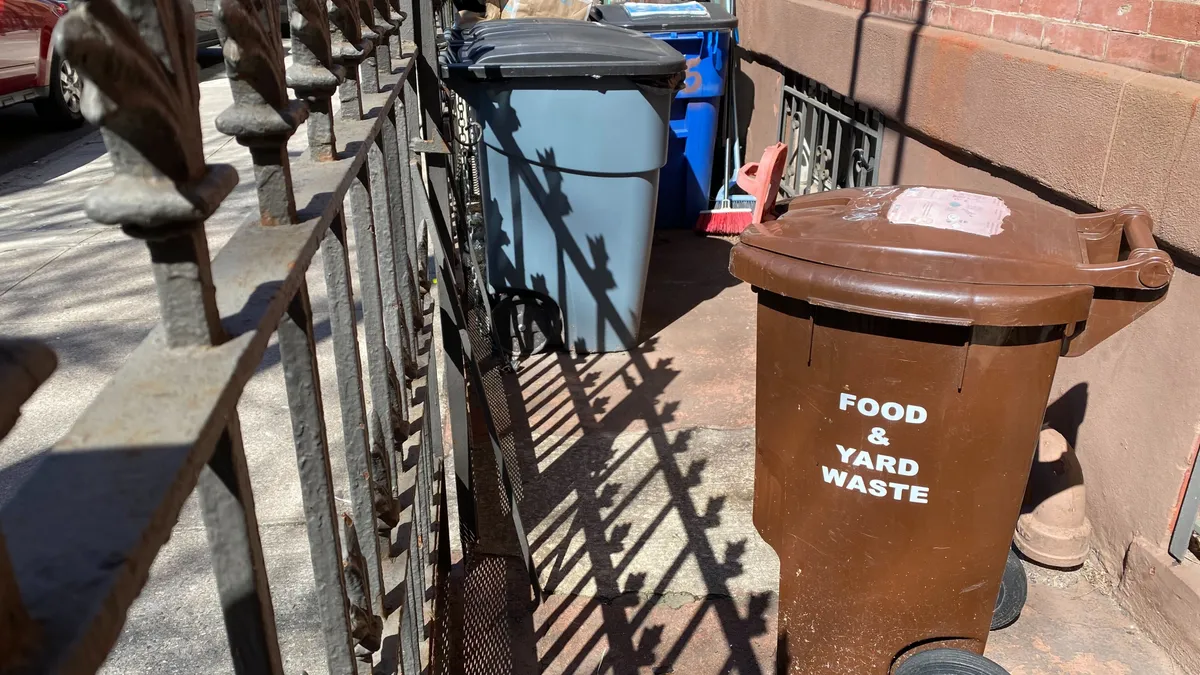The Minnesota Pollution Control Agency is set to require the seven counties making up the Twin Cities metropolitan area to implement a series of strategies aimed at reducing waste and boosting collections and recycling as it confronts looming issues with waste disposal capacity.
The agency estimates that annual garbage generation in the area could reach 3.92 million tons by 2042, and it projects that remaining permitted landfill capacity could fill up in five to 14 years absent changes.
The 20-year solid waste management policy plan is updated every six years. At a virtual public hearing on Tuesday, one of several planned public meetings, MPCA Assistant Commissioner of Land Policy Kirk Koudelka emphasized the need to focus on waste reduction and reuse.
“We're all here for the same reason today: We have a 3.3 million-ton problem of garbage that is created here in the metro area, and too much of it goes to waste-to-energy facilities and landfills in the area for disposal,” Koudelka said. “With this plan we're really looking to see what we can do in terms of the greatest human health, social and environmental economic benefits.”
Disposal strain
The agency estimates one-third of the Twin Cities metropolitan area's 3.3 million tons of waste was landfilled in 2021. It also acknowledged that while landfilling has decreased 18% since 2008, the amount of waste going to the metro area's landfills went up by more than 30% in just one year. That's due in large part to the closure of Great River Energy's Elk River WTE facility, which has resulted in 250,000 tons of waste annually being redirected to landfills, according to MPCA's plan.
In reaction to the closure, MPCA announced a "short-term solution" in 2021, naming four landfills to which it could send 5.6 million more tons of waste annually. MPCA noted in its plan that two of the four applicant facilities — Republic Services' Pine Bend Sanitary Landfill, WM's Burnsville Sanitary Landfill, SKB's Rich Valley Landfill and Dem-Con's landfill in Shakopee — submitted permit applications to accept mixed MSW.
The agency notes that its capacity from waste-to-energy facilities is just over 800,000 tons per year at three remaining facilities. But that capacity is further threatened by the potential closure of the Hennepin Energy Recovery Center, the largest remaining waste-to-energy incinerator servicing the area. A provision in a Minnesota state bonding package would give Hennepin County, home to Minneapolis, $26 million toward an anaerobic digester project — only if the county submits a plan to close HERC.
Hennepin County is reportedly working on plans to build a 25,000-ton-per-year anaerobic digestion facility to reduce the amount of organics sent to HERC or other facilities. Currently, Minnesota's waste hierarchy ranks waste-to-energy above landfill, but Peder Sandhei, a principal planner at MPCA, said that the agency would be doing a "detailed analysis" to determine the environmental and health impacts of WTE versus landfilling.
MPCA also needs to decide where it categorizes anaerobic digestion in its waste hierarchy. During the meeting, Sandhei said the agency would likely consider whether the resulting digestate was used for compost or landfilled, and it would categorize facilities in the hierarchy accordingly.
New strategies
Much of this year's plan remains focused on source reduction and sustainable materials management to address the capacity shortfall. The plan requires the seven counties in the Twin Cities metropolitan area to design a waste strategy that incorporates a number of recommendations included in the policy plan.
The 70 strategies are assigned a certain number of points based on their impact and level of difficulty. Counties must develop an overall plan that achieves 75 points through a combination of the optional strategies included, and are awarded points if they’ve already incorporated such strategies.
Strategies that are considered "low-hanging fruit," like participating in Reuse Minnesota meetings, receive one point, while adopting a mandatory consumer charge for take-out containers, utensils and single-use cups, receive nine. Other high-value strategies include financial assistance for building deconstruction, incentivizing tree treatment to extend the life of embattled ash trees and establishing a curbside set-out day for collection of reusable items.
Emily Barker, executive director of Reuse Minnesota and a former MPCA organics and recycling specialist, praised the plan's emphasis on reuse, especially its requirement that counties offer grants for waste reduction, reuse, and repair.
"We give [the focus on reuse] a lot of kudos,” Barker said during the meeting’s public comment period. “It's been at the top of the hierarchy for a long time, but in practicality, for how it’s actually been prioritized, it’s been pretty low.”
She also urged counties to adopt measures that would encourage all county and city-led events and food providers to use reusable food and beverage service ware, saying government employees need to “put your money where your mouth is.”
Though many of this year's plan recommendations focus on reduction and reuse, Sandhei also acknowledged the metro area's state-mandated goal to reach a 75% recycling rate by 2030, set in 2014. In 2021, the area's recycling rate was 45.2%.
“Just because we're focused on the top end of the hierarchy doesn't mean we're ignoring recycling and organics,” Sandhei said. “There are a lot of things we can still do to ensure we are properly recovering material.”
Among other recommendations, the plan requires counties to establish mandatory pre-processing of waste at resource recovery facilities and landfills by 2025, acknowledging that “achievement of the 75% recycling goal will require major system changes.” It also requires weekly recycling collection, rather than bi-weekly as is currently done in most of the area’s cities, by 2025.
The agency also laid out steps for an expansion of organics infrastructure. Counties or cities are required to collect recyclables, trash and organics on the same day to simplify schedules in the draft plan. Residential curbside organics collection would also be required for cities with more than 5,000 residents by 2025. Hennepin County phased in curbside organics collection for cities with 10,000 residents or more at the start of 2022.
Where those organics will go remains a challenge the agency must solve. In the plan, MPCA acknowledged that there was no sign of an increase in organics processing capacity in the region to manage the coming increase in feedstock.
In addition to requiring counties to use food-derived compost in county construction and landscaping projects, the plan also encourages them to find new outlets to increase food to animal operations.























